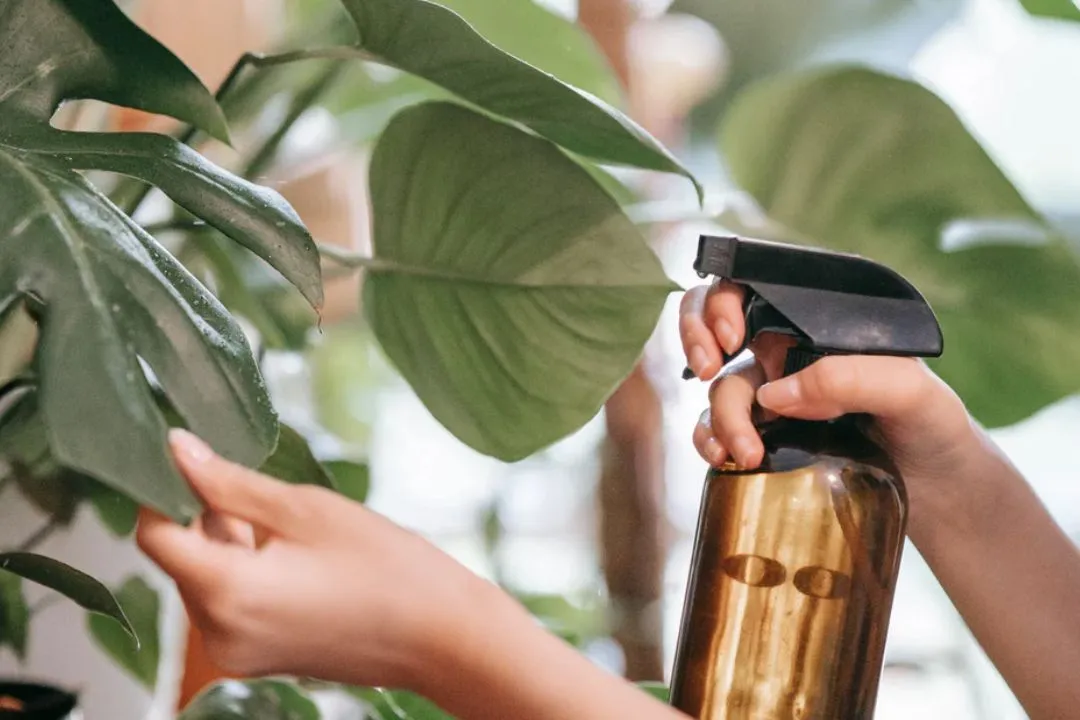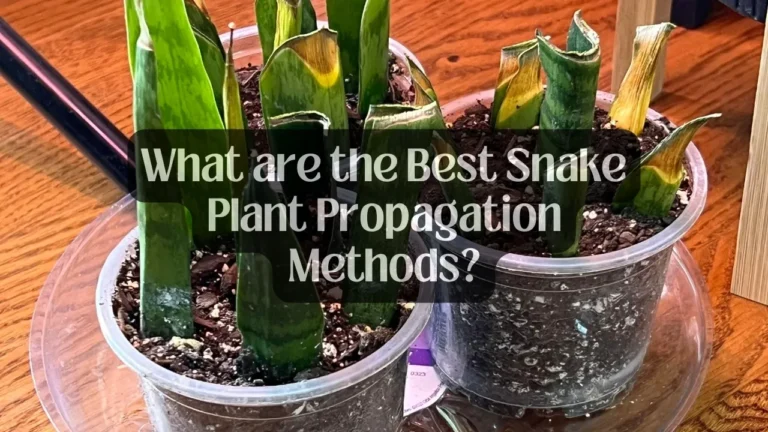Monstera Deliciosa Care – How to Grow And Propagate at Home?

Commonly known as the Swiss Cheese Plant, the Monstera Deliciosa is a true showstopper. With its lush, tropical foliage and striking natural fenestrations, this plant adds an air of elegance to any space. But how does one care for Monstera Deliciosa?
The Monstera Deliciosa prefers dappled sunlight, mimicking a tropical forest floor. Keep it in a warm room (60-75°F) with moderate humidity (misting optional). Water when the top inch of soil dries, and avoid soggy conditions. Feed with diluted fertilizer during spring and summer, then take a break in winter. Use a well-draining mix with peat moss, perlite, or orchid bark for optimal root health.
Let’s unravel the secrets to keeping your Monstera thriving.
Monstera Deliciosa in A Nutshell
Let’s take a quick look to know Monstera Deliciosa shortly.
| Aspect | Description |
| Origin | Tropical Forests of Southern Mexico |
| Growth Habit | Evergreen, vining plant |
| Mature Size | Up to 20 feet tall and 8 feet wide |
| Foliage | Large, glossy, deeply lobed leaves with natural holes |
How to Take Care of Monstera Deliciosa Indoor?

This is the section you’re looking for. Have a look at all the care traits for Monstera Deliciosa.
How Often Should I Water My Monstera Plant?
Like most houseplants, the Monstera Deliciosa prefers a balanced watering routine. During the warmer months, provide a thorough drenching once the top inch of soil feels dry to the touch.
In winter, allow the soil to dry out slightly more between waterings. Proper drainage is key to preventing root rot.
What Kind of Light Does a Monstera Deliciosa Need?
Monsteras love bright light, but not the harsh kind. Imagine sunlight filtering through leaves in a jungle – that’s perfect. Direct sunbeams can burn their leaves, and too much shade makes them grow slowly and skip those cool splits in their leaves.
A spot near an east or west window is usually great, but if your home is shady, a grow light can help!
Do Monsteras Require Special Soil?
Monsteras, while adaptable houseplants, thrive in a well-draining potting mix. This ensures proper aeration around the roots, preventing the dreaded root rot that can occur from soggy soil.
Opt for a commercial “draining potting mix” readily available at most garden centers. These mixes typically incorporate ingredients like peat moss, perlite, or orchid bark, all of which promote airflow and drainage.
To further enhance your Monstera’s growth, consider adding a moderate amount of compost to the mix. Compost provides a slow-release source of nutrients, keeping your plant happy and healthy.
Remember, proper drainage is key, so ensure your chosen pot has adequate drainage holes to allow excess water to escape.
Fertilizing Monstera Deliciosa

Monsteras like to eat during spring and summer, just like us! To keep those gorgeous leaves growing big and beautiful (with those cool splits!), give your plant a drink of diluted liquid fertilizer every 4-6 weeks during this growing season.
Just remember to halve the recommended strength on the fertilizer bottle – you don’t want to overdo it! Take it easy on the fertilizer in winter though, since your Monstera will be snoozing.
The Care for Leaves..

Speaking of leaves, those big beauties love to be clean! Regularly wipe them down with a damp cloth to remove dust and grime. This helps them soak up more sunlight for healthy growth.
Monsteras also enjoy a spa day every now and then – misting them with water or using a humidifier can be a real treat, as they love a humid environment.
When to Repot Monstera Deliciosa?
Monsteras are energetic growers, so they’ll appreciate a yearly upgrade to a bigger pot come springtime. Think of it as giving them a new pair of shoes! Choose a pot one size larger than the current one, gently loosen the roots, and repot in fresh potting mix.
This gives them more room to stretch their roots and keep growing happy and healthy.
For propagating, simply snip off a healthy stem below a node, remove the bottom leaves, and place the cutting in water or damp perlite. Once roots emerge, you can transplant your new Monstera into the soil.
Is Monstera Deliciosa Toxic to Pets?
Yes, Monstera Deliciosa can be mildly toxic to pets. While not fatal to humans, if ingested by pets, it can cause stomach upset, vomiting, and irritation in their mouth, tongue, and throat. This is due to insoluble calcium oxalate crystals found in the Monstera leaves.
To be on the safe side, it’s best to keep your Monstera Deliciosa out of reach of curious pets like dogs, cats, and birds.
FAQs
Here are some frequently asked questions by the Monstera plant raisers. I hope this will help!
Q: My Monstera isn’t growing any new leaves. What’s wrong?
There could be a few reasons! Monsteras prefer bright, indirect light. If yours is stuck in a shady corner, it might not have enough energy for new growth. Additionally, these plants like consistent moisture, but not soggy soil. Check if your watering routine needs adjusting.
Finally, Monsteras are happy eaters during spring and summer. Consider giving yours a diluted liquid fertilizer every 4-6 weeks during this growing period.
Q: My Monstera leaves have brown spots. What’s happening?
Brown spots on Monstera leaves can have a few causes. The most common culprit is sunburn. Make sure your plant isn’t getting a blast of direct sunlight for extended periods. Another possibility is inconsistent watering.
Letting the soil dry out completely between waterings can cause brown spots. Aim to keep the soil moist, but not soggy.
Q: Can I make my Monstera climb?
Absolutely! Monsteras are natural climbers in their natural habitat. You can encourage yours to climb by providing a moss pole. These vertical supports are covered in moss, which the Monstera can grip onto as it grows.
Moss poles add a beautiful vertical element to your décor and create a stunning, jungle-like feel.
Conclusion
In conclusion, the Monstera Deliciosa offers a stunning visual presence alongside surprising ease of care. This guide has provided a comprehensive foundation for Monstera’s success, encompassing essential aspects like light requirements, watering practices, and common troubleshooting tips.
Follow these tips and keep it out of reach of pets, and your Monstera will thrive for years, bringing a bit of paradise to your home!






